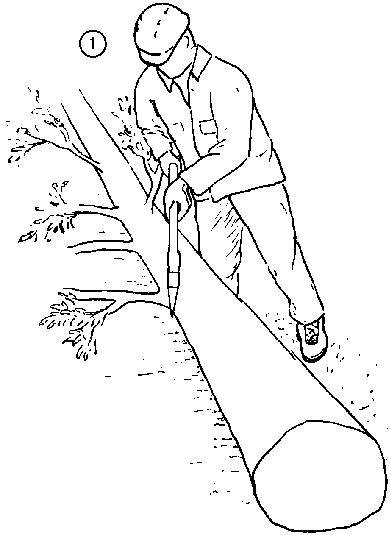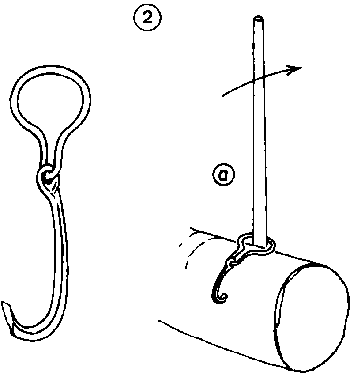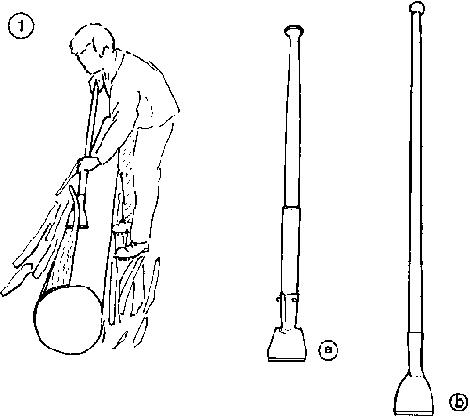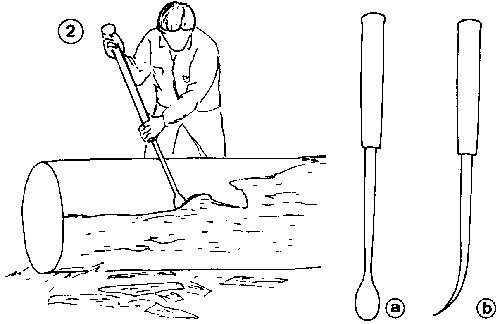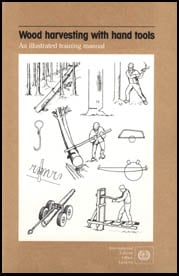
Wood Harvesting with Hand Tools (ILO, 1989, 128 p.)
Debranching and Debarking
DEBRANCHING
Debranching may be a rather time-consuming job, especially in coniferous trees. It is done with an axe. For small poles with thin branches, a matchet can also be used.
Debranching is a dangerous job and easily causes accidents which may be quite severe, especially if a powerful stroke misses the branch and hits the leg. This may happen especially to young, inexperienced workers.
It is therefore essential never to cut towards the legs, to stand as far as possible on the side of the tree opposite the branch that is cut (1) and always to direct the stroke away from the body.
Debranching usually proceeds towards the top of the tree. If branches are thick and under tension, it may be preferable first to cut them off some distance from their base and subsequently cut the remaining part flush with the stem.
If trees are heavily branched, care must be taken to remove cut branches from the tree and to keep the working space clear.
After debranching the upper side, a turning hook (2) is needed to turn trees or logs (2a).
DEBARKING
Debarking of wood may be required for a variety of reasons such as control of insects, acceleration of wood seasoning, reduction of weight in transport or simply the demand for wood without bark, for instance pulp wood, or the demand for the bark itself if it is used for tanning.
Large industries requiring debarked wood are usually equipped with debarking machines installed in the plant.
If manual debarking is required, a variety of different tools can be used. As debarking demands much time and effort, the tools should be suitable for the job and be handled efficiently.
Debarking of small- to medium-sized logs is usually done with debarking spades, of which different models exist. A short-handled debarking spade is used for harder bark (1a), a long-handled one for softer bark, to permit working in longer strokes (1b).
Axes may be used to debark trees or their butt ends if the bark is too thick and tough for the debarking spade.
It may be necessary to debark large logs of broad-leaved tropical trees which have very thick and strong bark. In such cases, an iron spoon should be used which permits, if necessary, beating the bark loose and peeling it off with the spoon (2).
Machetes are sometimes used for peeling off the thin bark of smaller trees, such as eucalyptus. They are less efficient and less convenient than debarking spades and should therefore be restricted to occasional work on a small scale.
As in debranching, a turning hook may be needed to turn logs during debarking.
